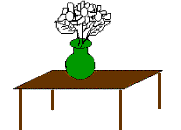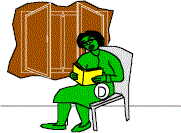
|
|

|
|
|
|
|
COLORAID is an innovative method that makes it easier and more efficient for foreign language learners to understand new phenomena and items of the basic grammatical structures and “core” vocabulary, respectively; to practise them thoroughly; and to integrate them into the system of previously acquired linguistic skills. It is suitable to provide the basis for a beginners’ or pre-intermediate course, but basically is aimed to be used as a tool in the individual work that – at any stage of language learning up to intermediate level, and independently of the characteristics, circumstances and general methods and fundamental tools of the course – is highly useful whenever new items of the basic grammatical structures are being learned or there is emphasis on increased accuracy in the previously learned material. However, because of widening – first of all – the scope of individual language learning possibilities, materials prepared by this procedure may become a real aid for learners without any organised background or in the framework of distance education.
Users: any foreign language learners up to pre-intermediate level, but above all those with difficulties in assimilate the new linguistic system (because of the circumstances of studying, the age or level of education of the learner, the dissimilarity – or possibly even the similarity – between the mother tongue and the target language, or for any other reason).
Possibilities of application: book/chart (+ tape-recording), slide + tape-recording (language laboratory), video, computer. The best user interface is given by a multimedia computer, since in this case there is an easy access to the different sorts of activities and a great versatility in their use: presentation, oral practice, written practice, oral/written tests, evaluation; a permanent and immediate feedback is available; it is very easy to integrate playful elements into the material; it is possible to ensure the constant on-line help, indispensable for individual studies and distance learning.
Basic principle: It is a primary condition for an efficient foreign language learning that, once grown out of early childhood, learners, on the one hand, understand clearly the function of the linguistic forms (grammatical phenomena and vocabulary items) to learn, on the other, never carry out a monotonous, mechanic linguistic activity, always have a notional background adequate to the passive or active use of the foreign language they are performing. Normally, we only speak or write with a purpose in mind. In a natural situation, speaking our mother tongue, it goes without saying. But when speaking a foreign language and in an artificial – classroom/teaching – situation, especially at beginners’ and pre-intermediate levels, it is not so easy to grant. In order to achieve it, we must offer the student some basic or complementary information, which can be made best by using visual means. The picture can help us to give the purpose for speaking, even if it is just to describe a picture or state something on the basis of the picture, or answer a simple question according to the information provided by it. But the more unambiguous the picture is the better, particularly in case of individual/distance learning.
Solution: The student become acquainted with the new linguistic (grammatical
and lexical) phenomena and practise them through the medium of pictures using
a flexible but consistent visual symbol system.
| The presentation and practice take place at two levels: | 1. word |
| 2. sentence |
1. Word: The semantization is made by means of simple line drawing.
The presentation must not exceed in details the grade of abstraction of the
word in question.

|
|

|
|
|
|
|
2. Sentence: Grammatical (morphological and syntactic) phenomena are
always presented and practised at sentence level. The production of the written
or spoken linguistic form is always preceded by the presence of a picture consisting
of constituent parts selected according to strict rules and articulated in harmony
with the syntactic system of the target language. The sentence level elements
of the given sentence are detached from each other by different colours, as
far as they can be visualised. The supplementary elements of the picture, which
are necessary to make clear its message but without being inherent in it, remain
in the background (in black and white, or grey). The distribution of colours
is this:
subject — greenpredicate (verb) — red
direct object — orange/yellow
adverbial — brown

|
The vase is on the table. |

|
Dorothy is reading a book near the window. |
Of course, this system of four members and this distribution of colours are not constant, compulsory, they can vary within each one of the given teaching materials, depending on the means to be used and the grammatical system of the language in question, or its traditions in the description of the linguistic phenomena. In the case of English, for example, the dative (as shown by its name: indirect object) is considered as a kind of object. Even so, when teaching or learning English as a foreign language, it seems to be useful to distinguish clearly between direct and indirect object. Thus, as a fifth independent category, we include it in our system, using together the orange and brown colours to symbolise it:
indirect object — brown and orange/yellow (in English)

|
The boy is giving the girl some flowers. |
Beyond the symbolic use of colours, other kind of graphical solutions are applied too in order to make sure that pictures offer unambiguous background information for students in their language activity (in understanding, pronouncing or writing a given sentence): consistent depicting of persons and objects, representation of the grammatical persons by number headed figures, indication of the speakers intentions (statement, question, negation) by secondary symbols, etc.

|
|
|
|
| Where is the vase? | It is on the table. |
| Is the vase on the table? | Yes, it is. |
| Is the vase in the cupboard? | No, it is not. It is on the table. |
| The vase is on the table, isn’t it? | Yes, it is (on the table). |
| The vase is in the cupboard, isn’t it? | No, it is on the table. |
| Is there a vase on the table? | Yes, there is. |
| Is there a book on the table? | No, there is not. |
|
|
The vase is on the table. / There is a vase on the table. |
|
|
What is on the table? |
|
|
Where is the vase? |
1. Coloraid had been developed and has been widely
used throughout the last decades in teaching Hungarian as a foreign language.